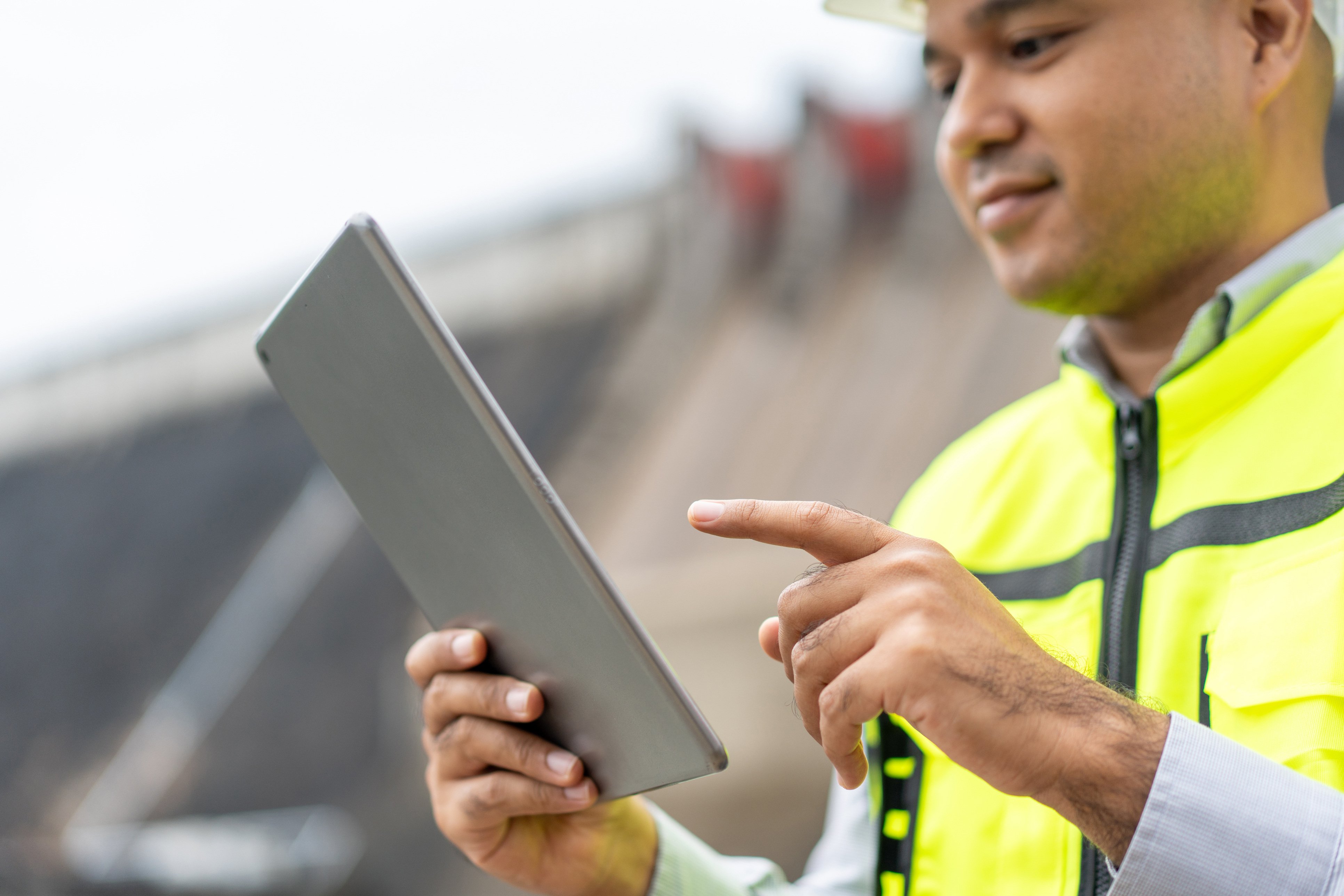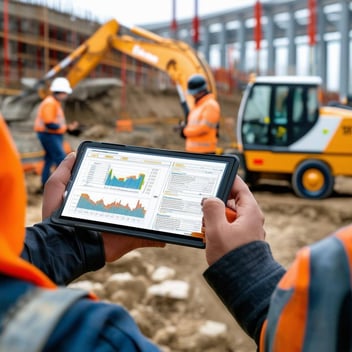Monitoring project progress is crucial in construction to achieve time, budget, and quality objectives. Through progress monitoring, project managers can identify potential delays, address issues promptly, and keep stakeholders informed.
This comprehensive guide explores easy and effective ways to track construction project progress, utilizing both traditional methods and modern digital tools.
Why Tracking Construction Progress is Crucial
Tracking progress effectively in construction projects offers multiple advantages that enhance overall project success. Here’s why it’s essential:
Improved Efficiency
Monitoring progress helps in identifying delays and bottlenecks early on. This allows project managers to make timely interventions, ensuring that the project remains on schedule. By tracking progress, teams can optimize workflows and improve productivity, leading to more efficient project execution.
Cost Control
Regular tracking of project progress is crucial for managing and predicting expenses. By keeping a close eye on the budget and expenditures, project managers can prevent cost overruns and make informed decisions about resource allocation. This helps in maintaining financial control and ensuring that the project stays within budget.
Quality Assurance
Tracking progress ensures that tasks are completed to the required standards and specifications. Regular inspections and quality checks help in maintaining high-quality standards throughout the construction process. This not only ensures client satisfaction but also minimizes the risk of costly rework.
Accountability
Progress tracking keeps all team members accountable for their roles and responsibilities. By documenting progress and assigning tasks, project managers can ensure that everyone is aware of their duties and deadlines. This promotes a sense of responsibility and ownership among team members, leading to better performance and collaboration.
Common Challenges in Tracking Construction Progress
While tracking construction progress is essential, it comes with its own set of challenges:
Data Collection
Consistently collecting accurate and reliable data can be difficult, especially in large and complex projects. Manual data collection methods are prone to errors and omissions, which can impact the accuracy of progress tracking.
Communication
Ensuring that all stakeholders are informed about the project’s progress can be challenging. Effective communication is crucial for keeping everyone on the same page and avoiding misunderstandings. However, coordinating communication among multiple teams and stakeholders can be complex.
Technology Adoption
Integrating new tools and technologies with existing systems can be a hurdle. Adopting modern digital tools requires training and a change in workflow, which can be met with resistance from team members. Ensuring smooth technology adoption is essential for effective progress tracking.
Traditional Methods of Construction Progress Tracking
Before the advent of modern digital tools, construction projects were tracked using traditional methods. While these methods are still in use today, they come with their own set of advantages and limitations.
Documentation and Manual Updates
Traditional progress tracking relies heavily on documentation and manual updates. Here are some common traditional methods:
Site Visits
Regular site visits are essential for assessing progress and recording updates. Project managers and supervisors visit the construction site to inspect the work, take notes, and report progress. These visits provide firsthand information about the project's status and help identify any issues or delays.
Daily Reports
Compiling daily reports from site managers and workers is a common practice in traditional progress tracking. These reports provide detailed information about the tasks completed, materials used, and any challenges faced on a daily basis. Daily reports help in maintaining a record of the project’s progress and ensure accountability.
Checklists
Using checklists is another effective method for traditional progress tracking. Checklists outline the tasks to be completed and serve as a guide for workers. They help in ensuring that all tasks are completed as per the schedule and to the required standards. Checklists also provide a systematic way to track progress and identify any missing tasks.
Pros and Cons of Traditional Methods
While traditional methods of progress tracking have their advantages, they also come with certain limitations:
Pros
- Simplicity: Traditional methods are straightforward and easy to implement. They do not require complex technology or extensive training.
- Low Cost: Traditional methods are generally low-cost compared to modern digital tools. They rely on manual documentation, which is inexpensive.
- Ease of Use: Traditional methods are familiar to most construction professionals and do not require specialized skills or knowledge.
Cons
- Time-Consuming: Manual data collection and documentation can be time-consuming, especially in large projects. This can lead to delays in updating progress reports.
- Prone to Human Error: Traditional methods are susceptible to human error, such as incorrect data entry or missed updates. This can impact the accuracy of progress tracking.
- Less Efficient for Large Projects: Traditional methods may not be efficient for large and complex projects that require detailed and real-time progress tracking.
Modern Digital Tools for Real-Time Tracking
In recent years, modern digital tools have revolutionized construction progress tracking. These tools offer real-time updates, centralized data management, and enhanced communication, making progress tracking more efficient and accurate.
Overview of Digital Tools
Digital tools for construction progress tracking include a wide range of software and applications designed to streamline the tracking process. Some of the most popular tools include:
Mobile Apps
Mobile apps are designed for on-site workers to report progress and issues instantly. These apps allow workers to upload photos, videos, and notes directly from the construction site, providing real-time updates to project managers and stakeholders.
Drones and Photography
Drones and photography are increasingly being used for construction progress tracking. Drones can capture aerial images of the construction site, providing a bird’s-eye view of the project’s progress. This helps in identifying any issues or delays that may not be visible from the ground.
Benefits of Real-Time Tracking
Real-time tracking offers several benefits that traditional methods cannot provide:
Accuracy
Real-time data reduces errors and provides a clear picture of the project’s status. By collecting data in real-time, project managers can ensure that the information is accurate and up-to-date.
Efficiency
Real-time tracking streamlines communication and decision-making processes. With instant updates, project managers can quickly identify and address any issues, reducing delays and improving overall efficiency.
Accessibility
Centralized data is accessible to all stakeholders anytime, anywhere. This ensures that everyone is on the same page and can access the latest information about the project’s progress.
Examples of Popular Tools
Several digital tools are available for construction progress tracking, each offering unique features and benefits:
hh2 Remote Payroll
hh2 Remote Payroll offers a streamlined solution for managing payroll in the construction industry. It allows for efficient time tracking and payroll processing, ensuring that all labor costs are accurately recorded and managed.
hh2 Document Flow
hh2 Document Flow provides a robust platform for managing and distributing documents across construction projects. This tool helps in maintaining accurate records and ensures that all team members have access to the latest project documents.
hh2 Human Resources Management
hh2 Human Resources Management facilitates the efficient management of human resources in construction projects. This tool helps in tracking employee details, managing benefits, and ensuring compliance with labor regulations.
Best Practices for Construction Progress Tracking
To ensure effective progress tracking in construction projects, it’s essential to follow best practices. Here are some key practices to consider:
Establishing a Single Source of Truth
Using a single platform to store and manage all project-related data is crucial for accurate and efficient progress tracking. This ensures that all team members have access to the same information and can update the platform regularly.
Consistent Updates
Ensuring that all team members update the platform regularly is essential for accurate progress tracking. Regular updates help in identifying any issues or delays early on, allowing project managers to make timely interventions.
Workflow and Task Tracking
Creating detailed schedules with milestones and deadlines is crucial for effective progress tracking. Assigning tasks clearly to team members and tracking their completion ensures that the project stays on schedule and meets quality standards.
Schedule and Field Productivity Tracking
Visualizing project timelines and dependencies using Gantt charts helps in tracking progress and identifying any delays. Daily field reports provide detailed information about productivity and progress, helping project managers make informed decisions.
Enhancing Progress Tracking with Multimedia
Using multimedia elements like photos and videos can enhance progress tracking and provide valuable visual records of the project’s status.
Using Photos and Videos for Documentation
Photos and videos provide visual records of progress, helping in dispute resolution and quality control. Regular updates with photos and videos help in maintaining accurate records and provide a clear picture of the project’s status.
Importance of Categorization and GPS Tagging
Categorizing images and videos by date, task, or location makes it easier to retrieve and organize visual records. GPS tagging provides accurate location data for each visual record, helping in tracking progress and identifying any issues.
Lessons Learned and Best Practices
Regular training for all team members on the tools and best practices is essential for effective progress tracking. Continuous improvement by regularly reviewing and updating tracking processes helps in maintaining accuracy and efficiency.
Conclusion
Tracking construction project progress effectively is crucial for successful project completion.
By combining traditional methods with modern digital tools, you can achieve better efficiency, cost control, and quality assurance.
Embrace these strategies and explore hh2’s offerings, including Remote Payroll, Document Flow, and Human Resources Management, for improved project tracking and management.
Further Readings
Embrace these strategies and explore hh2’s offerings, including Remote Payroll, Document Flow, and Human Resources Management, for improved project tracking and management.
Blog Transcript



